ANGKOR (Day 17 - part 1)
Chetra was back a little before 6 am. We headed out to Angkor Wat to watch the sun rise. Unfortunately there was a bit too much cloud cover. We sat by one of the algae-covered pools, watching red and black dragonflies dart about and listening to loud small frogs. Monkeys called in the distance. It was extremely peaceful.
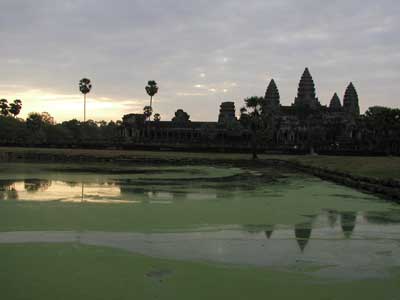
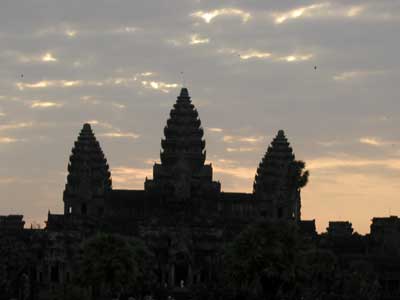
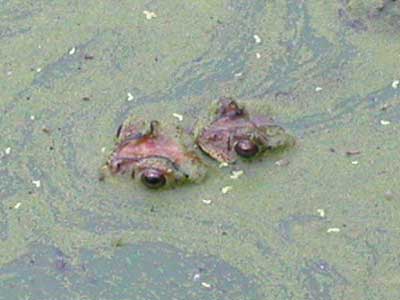
A pair of frogs
The sites we were going to see in this area were Preah Khan, Neak Pean, Ta Som, East Mebon, Pre Rup and Banteay Kdei.
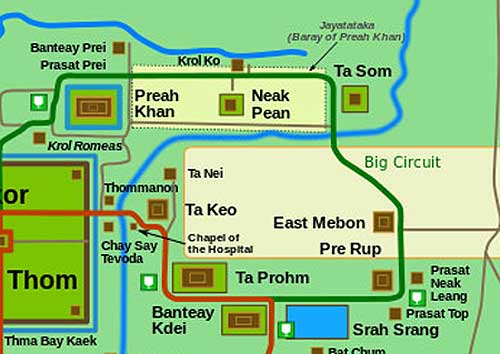
Preah Khan (Royal Sword) was built by King Jayavarman VII in 1911 in honor of his father. Located deep in the jungle and covering 138 acres, the complex is surrounded by a moat and fortified wall. In its heyday, it housed almost 100,00 officials and servants.
Like Ta Prohm, it's been left largely unrestored (with any free-standing statues having been removed for safe-keeping). The reason for this is that any restoration would simply be guesswork. It was more important not to "falsify history."
We entered in the west gate and exited from the north one.

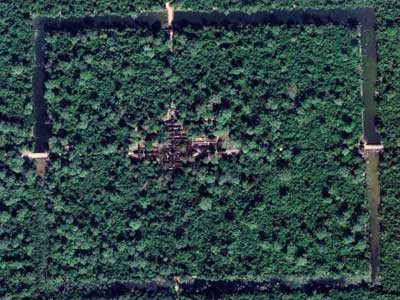
A clean map of the layout ... and the jungly satellite view of how it really looks
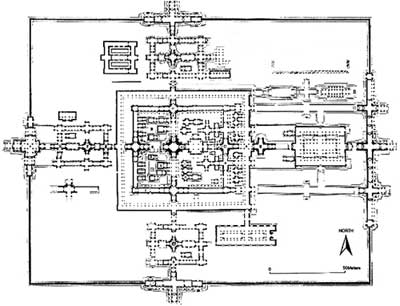
It had a typical temple design, with rectangular galleries located around a main Buddhist sanctuary. Hindu temples and buildings were sprinkled in later.
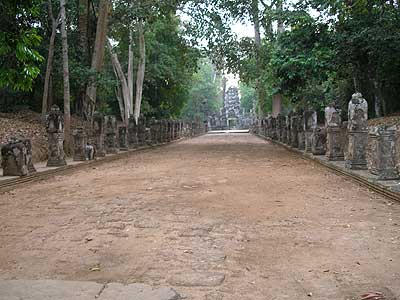
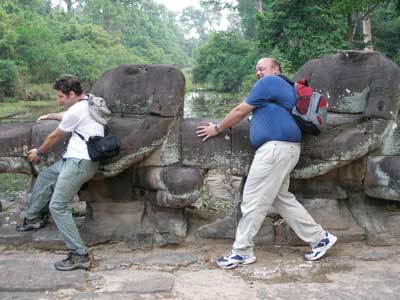
Again, gods and demons battled in their eternal tug-of-war... although Ron and Gerald helped this time.

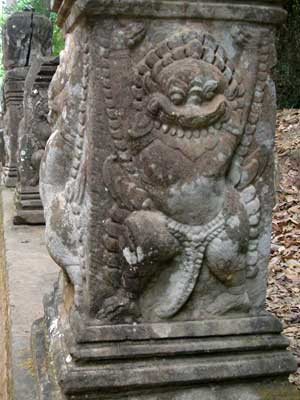
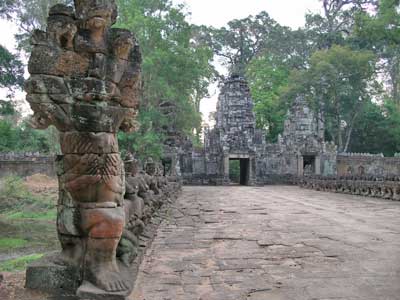
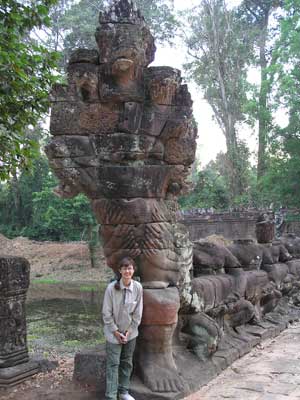
The naga's head (or end of the "rope"). These things were quite large!
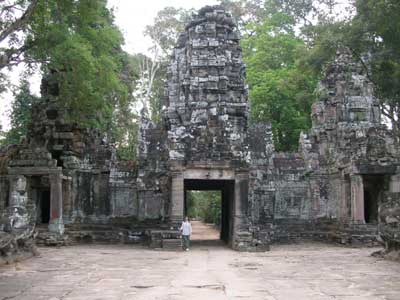
The west entrance gate
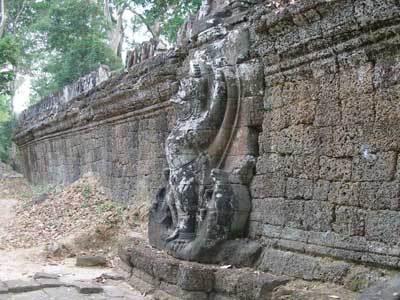
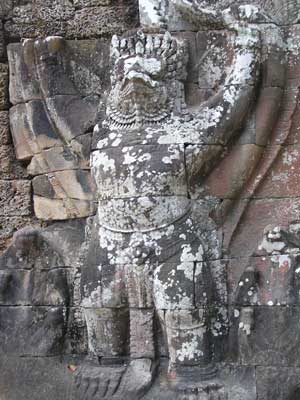
The large outer wall was protected by 16-foot tall garudas. The Garuda is a divine eagle-like creature in Hinduism and Buddhism. It is usually associated with the god Vishnu.
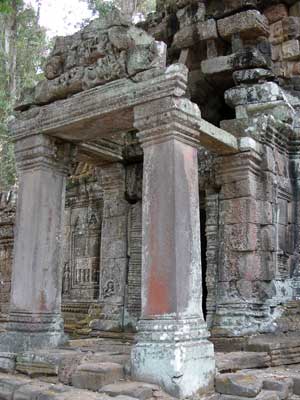
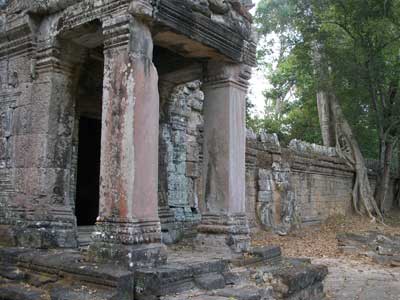
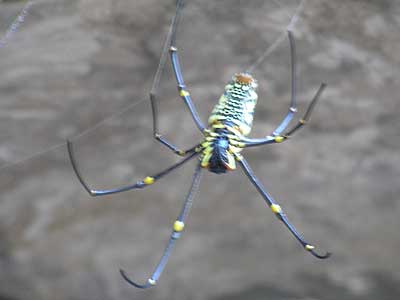
As a reminder we were in the dense jungle, a giant spider hovers nearby. We were immersed in the sounds of birds and cicadas.
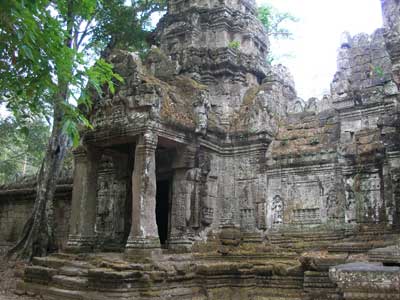
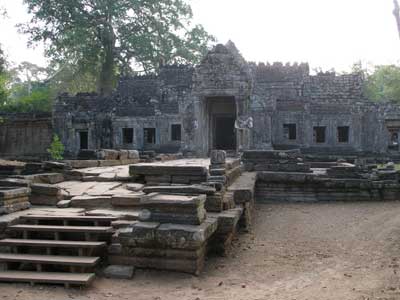
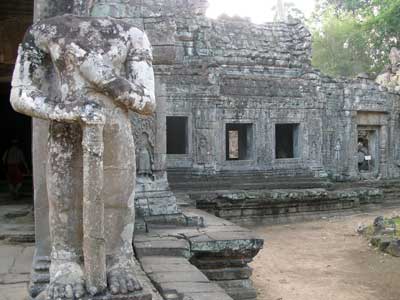

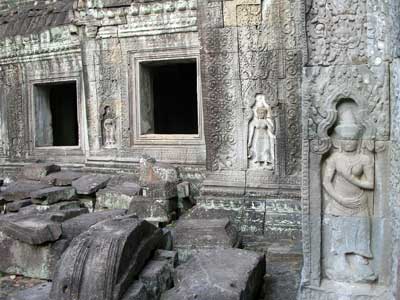
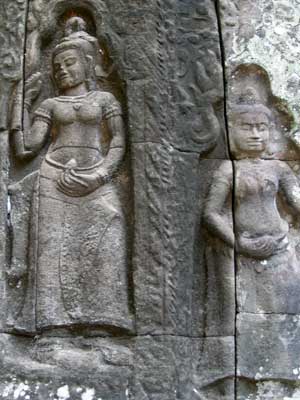
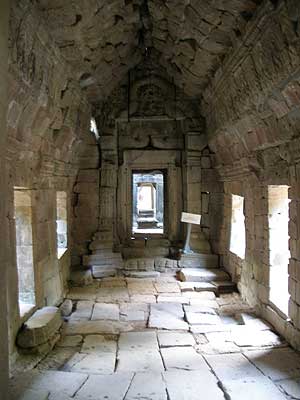
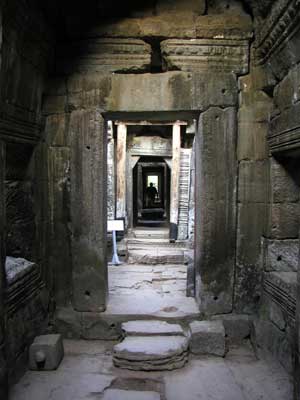


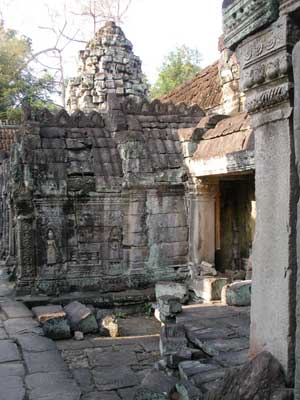
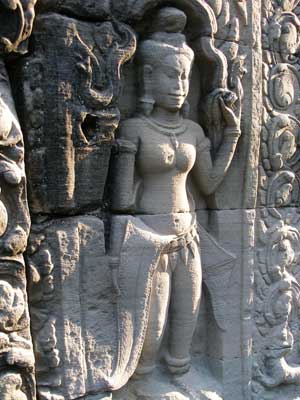
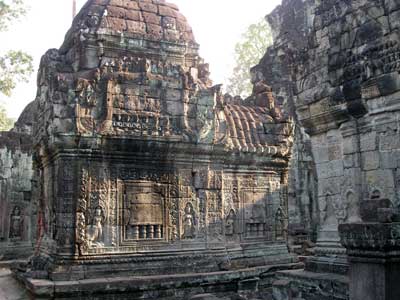
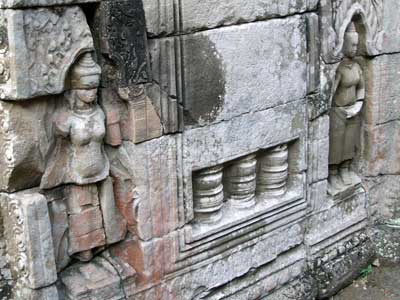
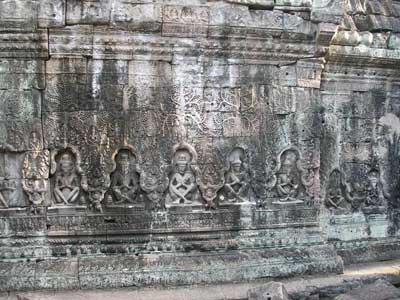
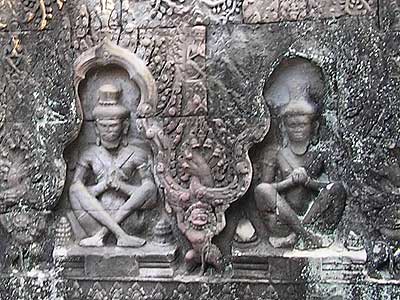
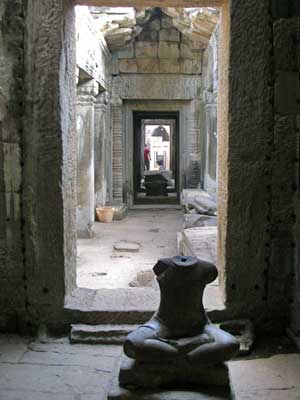

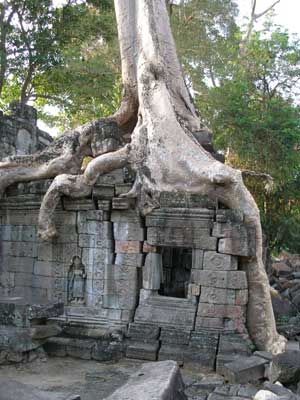
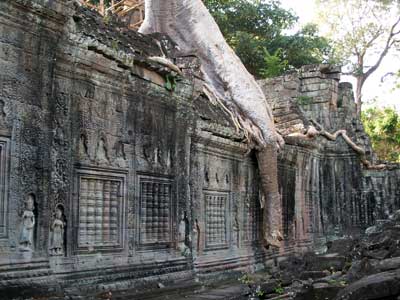
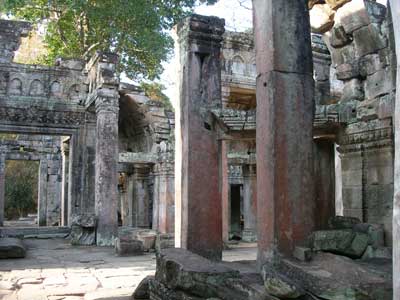
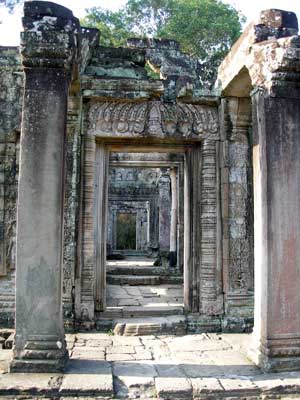
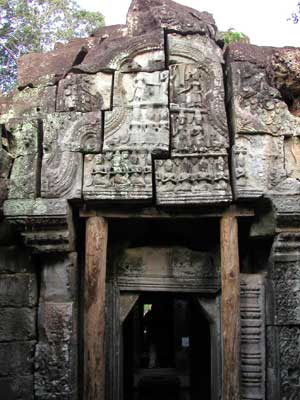
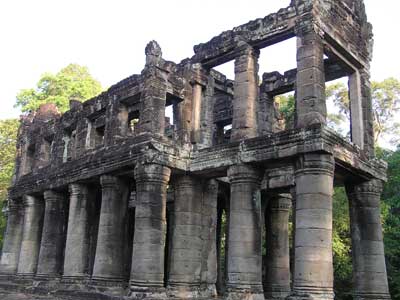
The purpose of this two-story building is unknown.
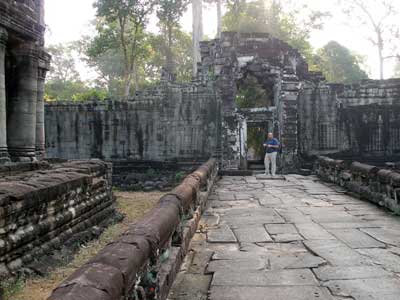
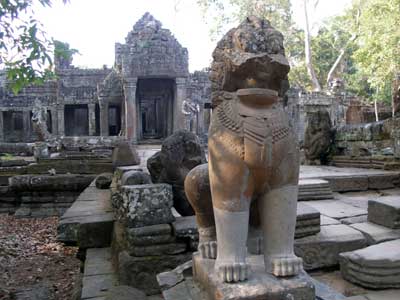
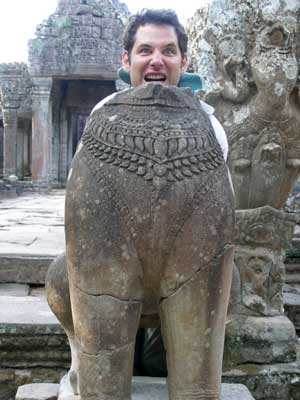
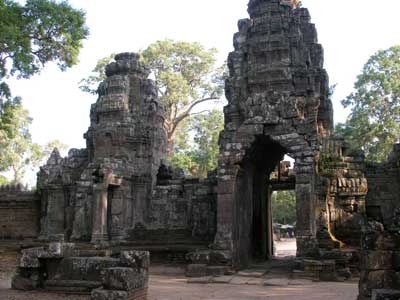
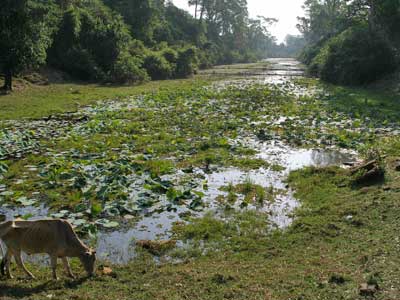
The north gate ... and moat
Neak Pean (The entwined serpents; neak being the Khmer form of naga) was meant to be create a sort of artificial island with Buddhist temple in the center. It was currently dry so the effect wasn't as impressive. It was originally designed for medical purposes, with the four side pools (representing water, earth, fire and wind) supposedly containing healing waters. Each pool was presided over by one of "Four Great Animals"... an elephant, bull, horse and lion. Only a horse statue remains today.
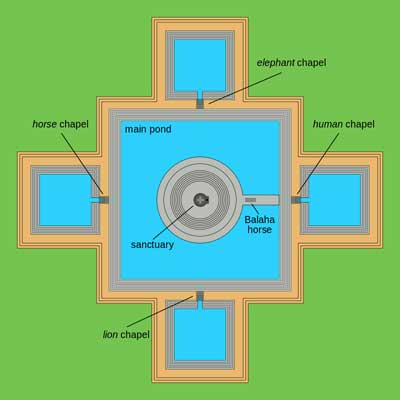
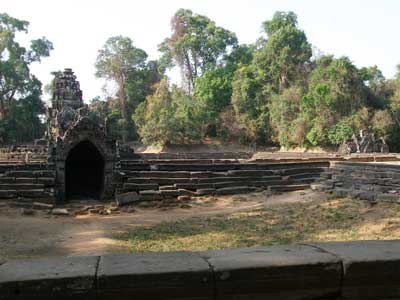
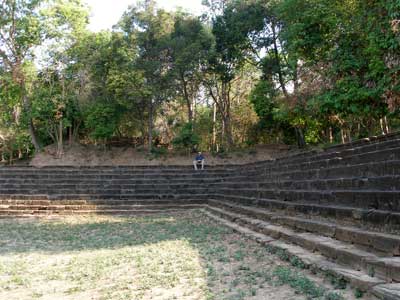

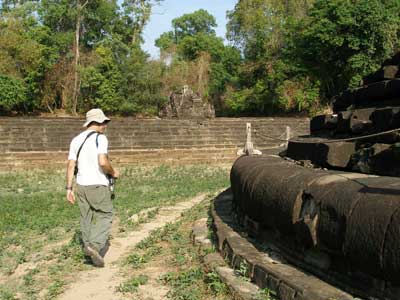
The thick, round base of the temple is the bodies of the snakes wrapping around it.
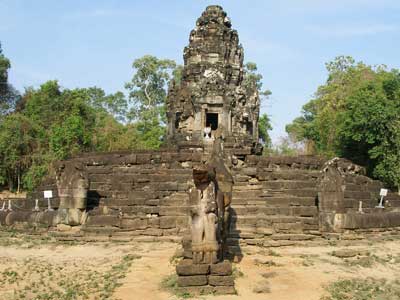
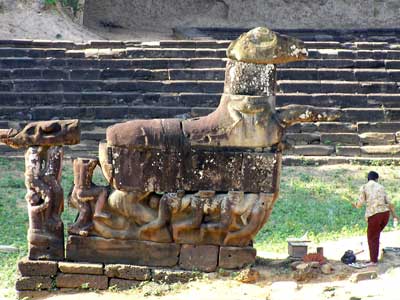
The horse
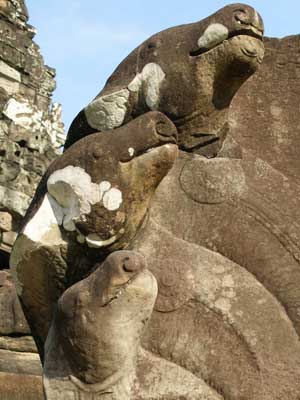
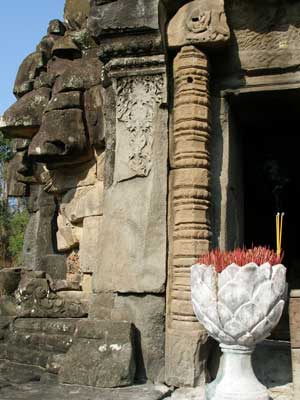
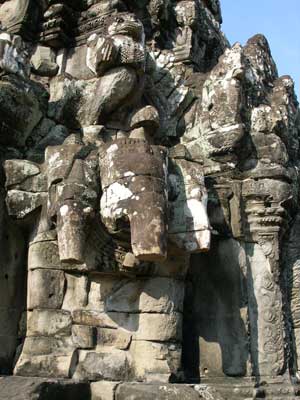
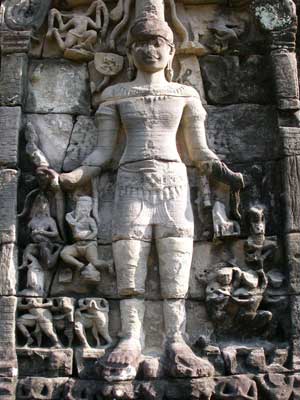
return • continue

